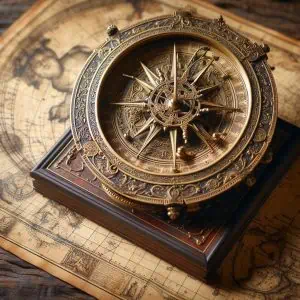The Gutenberg Press didn’t just print books—it sparked a knowledge revolution. This powerful medieval invention enabled mass production of texts, transforming education, religion, and science. From Bibles to medical manuals, the press made information accessible in ways previously unthinkable. This article explores ten key ways the printing press changed medieval and early modern life, showing how a single innovation reshaped the course of history.
Developed in the 15th century, the Gutenberg press marked a turning point in communication and education, unleashing a tidal wave of innovation and transforming the way information was disseminated.
Here are 10 remarkable advancements that the Gutenberg press brought forth:
1. Mass Production of Books
The most groundbreaking aspect of the Gutenberg press was its ability to mass-produce books. Prior to its invention, books were laboriously copied by hand, making them rare and expensive. The press allowed for the efficient replication of texts, making books more accessible to a wider audience.

2. Spread of Scientific Knowledge
The printing press facilitated the distribution of scientific works, enabling scholars to share their discoveries across borders. This laid the foundation for the Scientific Revolution, as scientists could now collaborate, build upon each other’s findings, and refine their theories collectively.
3. Standardization of Texts
With the press, the accuracy and consistency of texts improved significantly. Printed editions ensured that texts remained uniform, reducing the errors and variations that often arose during manual copying.
4. Emergence of Newspapers
The press paved the way for the creation of newspapers, enabling the timely dissemination of news and information to a broad readership. This marked a crucial development in the evolution of journalism and public discourse.
5. Literary Renaissance
The press played a pivotal role in the literary renaissance by making literary works, from poetry to plays, more widely available. This allowed literary movements to flourish as authors gained larger audiences and more immediate feedback.

6. Accessibility to Education
The availability of printed materials democratized education. Textbooks, manuals, and educational materials became more accessible, helping to spread knowledge beyond the privileged elite and fostering a more educated populace.
7. Preservation of Culture
The press enabled the preservation of cultural heritage by allowing for the mass production of religious texts, historical records, and philosophical treatises. This contributed to the conservation of human history and heritage.
8. Social and Political Discourse
Printed materials became a medium for discussing social, political, and religious ideas. Pamphlets and treatises circulated widely, sparking debates and challenging established norms, ultimately contributing to social change.
9. Language Standardization
The printing press played a key role in standardizing languages. As texts became more widely distributed, they influenced language usage and contributed to the development of standardized forms of writing and speaking.
10. Catalyst for Knowledge Economy
The Gutenberg press laid the groundwork for the knowledge economy by creating a demand for literacy and intellectual engagement. As more people sought access to information, new industries related to writing, publishing, and education emerged.

Johannes Gutenberg’s printing press was undoubtedly a technological marvel that reshaped the world. It unleashed a cascade of advancements that propelled societies into an era of enlightenment, innovation, and interconnectedness.
The profound impact of the press continues to reverberate in our modern world, reminding us of the power of human ingenuity to transform the way we communicate and learn.
What were some of the main advancements introduced by the printing press?
Mass book production, consistent typefaces, faster distribution of ideas, and improved access to education.
How did the Gutenberg Press help shape the Renaissance?
It enabled the rapid spread of classical and new knowledge, supporting art, science, and philosophy.
What types of books were printed first?
Religious texts, scholarly works, and practical guides were among the first mass-produced using the press.
Why is the Gutenberg Press considered one of the most important medieval inventions?
It revolutionized communication and laid the foundation for modern publishing, education, and global knowledge exchange.






